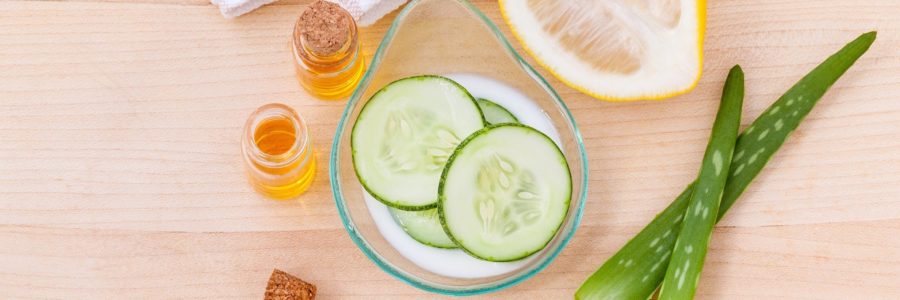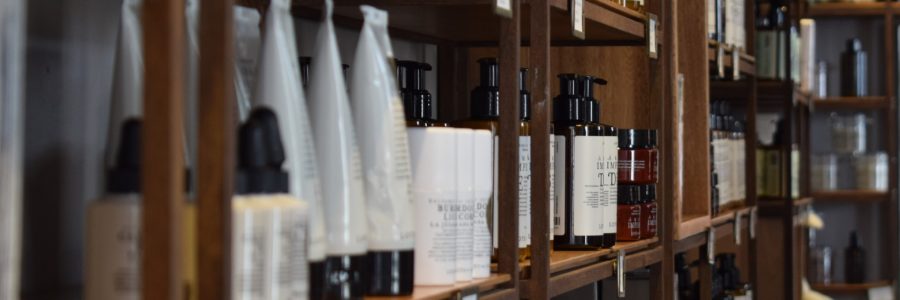InnerGlow Skin Care Program
Health from within…beauty throughout.
Welcome to the InnerGlow Skin Care Program! Here you will find resources to accompany you on your skin care journey.
We believe that if you understand the anatomy and physiology of the skin, you will not only be more effective in your daily skin care routines, but you will understand how skin is linked to all our major body functions – including immune, respiratory, circulatory, lymph, hormonal and neurotransmitter systems – and how caring for yourself on any one or all of these levels will improve the health of your skin. This is our “holistic” philosophy and why we named our skin care program “Inner Glow” –to remind us that beauty is “more than skin deep” and that ideal skin health radiates from the inside out.

The Physiology of Skin: What Are We Treating In Effective Natural Skin Care?
Our skin is our interface with the world and corresponds to our inner processes. It is our largest organ, weighing about 7-10 pounds and covering twenty-one square feet (6.4 square meters). Like our other vital organs, it performs a long list of life-sustaining tasks. It is also the body’s mirror: when we’re chronically fatigued, poorly nourished, or physically or emotionally stressed, our skin reacts. Premature aging is one consequence of failing to give our skin the care and attention it deserves.
The skin is a highly complex, dynamic tissue system. One square inch of the skin is composed of 19 million cells, 650 sweat glands, 100 sebaceous (oil) glands, 65 hair follicles, 19 000 sensory cells, 4 metres of blood vessels, and 16 meters of nerves, and 165 separate pressure-sensing structures, enabling us to sense pleasure, pain, pressure and hot and cold temperatures. Our skin can store up to 44 pounds of fat and up to 22 pounds of water.
Skin is made up of three main layers: the “Epidermis”, the “Dermis”, and the “Hypodermis”

The Epidermis
The epidermis is your skin’s outer layer and the only layer we can see with our eyes. As we age, remarkable changes occur which are hidden from our view. The outer surface of the epidermis, called the stratum corneum, is a protective coating of dead skin cells that forms when fresh cells made in the skin’s deeper layers push their way to the surface, flatten and die. This layer is thinner than a sheet of tissue paper and is our barrier against dehydration from the environment. It receives its primary supply of moisture from the underlying tissue, since constant contact from the external environment tends to dry the skin’s surface. When the skin is exposed to dry conditions, the cornified layer can become dry, brittle, firm and if untreated, it can crack and lead to infection. Underneath this outermost layer lie six more layers of the epidermis responsible for cell generation. The stratum corneum is sloughed off continually as new cells take its place. But as we age, this sloughing process slows down. In a young person, cell turnover occurs about every 28-30 days. By the time we’re in our sixties, the process takes 45-50 days, which is one of the reasons our skin loses the freshness or “youth” as the years go by. Although the stratum corneum is essentially “dead”, it serves an extremely important function: It helps your skin hold in moisture and oil. Basal cells, which produce new skin cells, are at the bottom of the epidermis. The epidermis also contains cells called melanocytes. These cells produce melanin, which determines the colour of your skin. Although we all have about the same number of melanocytes, the actual tone of your skin depends on your skin’s unique amount and concentration of melanocytes.
The Dermis
The dermis, which lies under the epidermis and makes up 90% of the thickness of your skin, is where most of the skin’s important work is done. The dermis contains nerve receptors, which are sensitive to pressure, temperature, and pain; sweat glands, sebaceous glands (which produce skin protective oil), hair follicles and blood vessels.
The sweat and sebaceous glands in the dermis help produce a thin coating of oil and perspiration that helps effectively protect you from infections. We often unwittingly strip this layer away through the use of harsh soaps, thus disrupting our skin’s natural balance of acidity and alkalinity (pH).
The dermis also contains a dense meshwork of collagen and elastin, two types of proteins that give your skin its strength and elasticity. The stimulation of these proteins is how our therapeutic treatment programs have the effect of increasing youthful tautness and suppleness to the skin.
The Hypodermis
Under the epidermis and dermis is a tissue composed mostly of fat. The fat layer serves to insulate and protect your inner organs and acts as a sort of cushion that helps keep the skin plump and smooth. The hypodermis also contains macrophages, which are immune cells that help keep your skin free from infection, and fibroblasts. Good nutrition is important to minimize inflammation at this layer that could lead to puffiness, acne or psoriasis as well as maintain healthy fibroblasts to reduce the visual effects of the natural loss of fat stores in this layer of skin that can contribute to loose, sagging skin as we age.
Take Aways
This is why exfoliating once or twice per week is so important in your skin care routine. By removing the “dead” skin from the epidermis, moisturizers are more easily absorbed into the deeper layers of the skin.
It is important to use emollients on your skin as creams create a waxy barrier to prevent dehydration and keep the skin moist and supple.
Since the life cycle of skin cells within this layer takes about 28 days, it may take three to four weeks to notice significant changes at the skin’s surface from using a new moisturizer or cosmetic.
Free-Radicals and Inflammation-Aging Connection
“Aging” of our skin is a pre-programmed process that begins with degeneration or damage of tissue at a cellular level. Finding ways to reduce or eliminate cell damage significantly affects the aging process.
The most important cause of cellular damage is free-radicals. Free radicals are oxygen molecules that have lost an electron in interactions with other molecules. As a result, these molecules are extremely unstable, or reactive. In their quest to “heal” themselves, free radicals steal electrons from other, healthy molecules, creating more free radicals in the process, damaging cell components.
Although free radicals are entirely natural – they are a by-product of normal bodily processes, like breathing air or digesting food – they are also extremely damaging. Every time free radicals seek to stabilize themselves, they harm healthy cells. Worse, free radicals aren’t just manufactured by our own bodies. They’re also unleashed by external factors including sunlight, cigarette smoke, hormonal imbalances, a poor diet, undiagnosed food sensitivities and air pollution.
Free radicals can damage virtually every part of a cell, including the nucleus, where DNA, the body’s unique genetic blueprint, is produced. They can also harm the fats inside the cells. If they take the extra electron they need from the collagen molecule in our skin, the result is that the collagen becomes damaged. Recall from our understanding of the anatomy/physiology of the skin that collagen is one of the main proteins that give our skin it youthful suppleness and tautness. When the collagen becomes damaged, the skin gets discoloured and stiff and loses elasticity, a condition that tends to make the skin look “old”. Since collagen stays in our skin for years, free radicals can attack it mercilessly and the end result is that free radicals sap our skin of its youthful appearance.

Antioxidants
Happily, our skin has allies in its continuing fight against free-radical damage. Antioxidants are a group of nutrients (including certain vitamins, amino acids and some other natural substances) that can stop or even reverse free-radical damage and put an end to subclinical inflammation and micro-scarring. They are basically standing guard and prepared to fight to keep your cells healthy, your skin beautiful and your body disease-free. Since there is no way to constantly monitor free radical activity or to measure the amount of antioxidants you have at any given moment, the best way to ensure you have protection is to have regular intake of dietary antioxidants. The best way to do this is to eat the freshest fruits and vegetables several times per day.
In addition to this is important to take an anti-oxidant-rich vitamin supplement that addresses your individual needs, based on your age, activity level, gender, how much stress you endure on an average day and other health concerns.
Research proves that consuming healthy foods can help your skin have a youthful, plump, radiant, glowing appearance. In 2007, the American Journal of Clinical Nutrition published a study done by British researchers that examined whether the food people eat affects the way their skin looks – and the answer was clear. More pronounced wrinkles were found in those with a higher intake of bad fats and processed carbohydrates (such as white bread and packaged cookies and snacks), while a diet rich in vitamin C was found to reduce wrinkles later in life.
When we don’t have enough anti-oxidants on board and free radicals get the upper hand, they damage the deep workings of the skin tissue in a process called “oxidation”. Think of the way an apple turns brown when it’s exposed to the air and you’ll get the picture.
The Importance of Organic and Safe Skin Care Products

Organic skin care is one of the fastest growing areas of the beauty industry. Many people are becoming more aware of the dangers of long term use of many commercial skin care products.
The cosmetics industry is a $50 billion a year business in the United States alone and spends a remarkable $2 billion a year on advertising. It is important to know that the FDA leaves synthetic additives in cosmetics largely unregulated, yet many of these chemically based products often contain known or suspected carcinogens, neurotoxins and hormone disruptors. In addition, few studies have looked at the dangerous cumulative and inflammatory effects of combining so many different skin products over a lifetime – or how these chemicals interact with all the other chemicals we are exposed to.
The average woman uses 5-12 different products on her skin each and every day, exposing herself to a cocktail of over 100 chemicals that are absorbed into her body! Even more appalling than that is the amount of chemicals we place on our skin every year. Women who use makeup daily absorb, on average, 5 pounds each year!
We are often shocked to find how many people are consciously choosing high-quality organic foods and at the same time ignoring the quality of skin care products they use on their skin every day. Our skin can absorb anywhere from 21-94% of what is put on it. Since the skin has the ability to absorb, and body tissue has the ability to store, the personal care products we use every day can cause toxic chemicals to add up. It is important to use only ingredients that promote your healthy appearance without doing any potential harm whenever possible. If there is not a product you would be willing to “eat”, you should not be putting it on your skin.
We believe that your skin, like the rest of your body, needs nutrients ~ not chemicals. When you use natural skin care products, you have the added benefits of naturally occurring compounds found in nature that work with the body to heal, rejuvenate, and fight free radical damage that can lead to aging and disease. These natural products function as “food” that help feed, nurture and protect your skin. This is unlike commercial products that don’t address the underlying cause, and temporarily suppress skin pathologies.
There are a growing number of wonderful chemical-free, body-friendly and organic skin care products available on the market. Our take is that if there is an ingredient that could potentially be harmful or could have adverse long-term effects on our health, why would we use it in our products when there are healthy and safe alternatives? The health of the skin is dependent on sound nutritional practices, healthy living and effective, safe protection on its surface.
Wrinkle-Fighting Foods To Include In Your Diet Every Day
Research proves that consuming healthy foods can help your skin have a youthful, plump, radiant, glowing appearance. In 2007, the American Journal of Clinical Nutrition published a study done by British researchers that examined whether the food people eat affects the way their skin looks – and the answer was clear. More pronounced wrinkles were found in those with a higher intake of bad fats and processed carbohydrates (such as white bread and packaged cookies and snacks), while a diet rich in vitamin C was found to reduce wrinkling later in life. There is no doubt that the foods you choose have a lot to do with the beauty of your skin!
Eat a balanced diet rich in colourful fruits and vegetables, lean protein, healthy oils and whole grains. The messages your cells receive from a burger and fries are very different from those of a plate of fresh greens with legumes, nuts and seeds drizzled with olive oil, fresh herbs and lemon juice
What Does Food Have To Do With It?
The body is made up of more than 100 billion cells, each of which is made up of fats and proteins. Carbohydrates offer these cells energy. These three components are necessary to support your body’s basic health.
However, these nutrients alone do not make your body and skin healthy. Your body also needs vitamins, minerals, and phytonutrients to perform optimally and look radiant. These nutrients help the skin repair damage, build support structures, stay moist, and prevent disease. For example, collagen is the skin’s main structural component, and the body cannot make it without vitamin C. If you do not eat foods rich in vitamin C, such as oranges, lemons and strawberries, your skin can lose its tight structure and begin to loosen, sag and wrinkle.
Fruits and vegetables are an important part of every healthy diet. Because they are packed with vitamins, minerals, antioxidants, and other phytonutrients that are beneficial to your skin, they are a vital part of a diet geared towards vibrant skin. The Canada Food Guide suggests that adults consume 8-10 servings of fruit and vegetables each day.
Wrinkle-Fighting Fruits
Choose fresh fruits that are rich in colour, which indicates that they are packed with anti-oxidants. (Best choices are indicated with an *).
- *Acai berries
- Apples
- Apricots
- Avocados
- *Blackberries
- *Blueberries
- Cantaloupe
- Cherries
- Coconut
- *Goji Berries
- Grapefruit
- Kiwi
- Limes
- Mango
- Papaya
- *Pomegranate
- Tomatoes
- Watermelon

Wrinkle-Fighting Vegetables
The less you do to a vegetable, the more phytonutrients remain intact. Boiling, microwaving, or baking vegetables will lower their phytonutrient value and reduce the vegetable’s ability to prevent wrinkle formation. Eating vegetables in a raw or minimally processed state will deliver the greatest phytonutrient boost.
- *Beets
- Bell Peppers
- Brussel Sprouts
- Cabbage
- Celery
- Cucumber
- Garlic
- *Kale
- Onions
- Parsley
- Radish
- *Red Peppers
- *Spinach
- Sweet potatoes
- *Winter squash
Other Wrinkle-Fighting Foods
- Almonds
- Flaxseeds
- Sesame Seeds
- Sunflower Seeds
- Legumes
- Sea vegetables
- Olive oil
- Green tea
- Oats
- Super green foods
(such as wheatgrass, barley and spirulina)




Avoid Sugar
Eating a diet full of high-sugar foods, such as soda, candy, white bread, and processed foods is associated with greater skin wrinkling. There is a theory among scientists that simple-sugar diets can increase the formation of compounds called “advanced glycosylation end products” (AGE). (Yes, the scientists thought it was funny to call these compounds AGE, as they are associated with the signs of aging, including wrinkles.) AGE compounds form in collagen, interfering with its ability to keep the skin looking smooth and tight, thereby increasing the formation of wrinkles.
Take a good-quality Omega-3 supplement, a multivitamin, and extra vitamin D.
Omega 3 Fatty Acids are important structural components of cell membranes throughout the body and increase production of collagen in skin cells. They help cells stay fluid and flexible, allowing nutrients to enter the cells and wastes to exit. Because it is the cell membrane that also holds water in, the stronger that barrier is, the better your cells can hold moisture — and that means plumper, younger looking skin. Combining this with a quality multivitamin will not only do wonders for your energy and beauty now, but will pay off for years to come!

Things you can do:
Buy organic
Support local farmers
Visit the farmer’s market
Grow a garden
Make your food beautiful
Prepare food with love

Vitamins for Skin Care

Since good skin health begins from within, various vitamins can be of benefit.
Vitamin A and its precursor, Beta-Carotene, help preserve the skin’s elasticity, regulate sebaceous glands, protect against infection, and stimulate collagen formation. A deficiency of this vitamin may result in dry, itchy skin, making it more likely that dead skin cells will clog the pores and cause breakouts.
The B-complex vitamins help keep the ravages of stress from showing on our skin. A deficiency is sometimes implicated in cracks around the mouth, corners of the mouth and eyes. B-complex vitamins are critical links in a number of enzyme-related chemical reactions that protect the skin, and your health in different ways. At any given time, one of the B-vitamins is at work in your body spurring on carbohydrate metabolism, nervous system function, fatty acid metabolism, the maturation of red blood cells and other important processes.
Vitamin C does miraculous things for your skin health. It prevents free-radical damage, strengthens the capillaries, promotes healing, stimulates collagen production and increases skin elasticity. Bioflavonoids help keep the capillaries strong, thereby inhibiting bruises, spider veins and varicose veins.
CoEnzyme Q10 is important to add to your supplement regime as it is the antioxidant most easily depleted in the skin by sun exposure or toxins. It is extremely important because it gets into the cell membrane and protects it from free-radical damage. It also works in the mitochondria – the energy producing portion of your cells.
Once you learn how skin is built, how it works, what causes skin problems and what nutrients and foods help your skin look beautiful, you have the ultimate recipe for healthy, radiant skin.
Essential Fatty Acids in Healthy Skin

If you think healthy skin and oil don’t mix, think again! The right oils—specifically oils high in essential fatty acids (EFAs)—can leave your complexion glowing.
Essential fatty acids are fats that we cannot make – we must take them in from the diet – hence the name “essential”. EFAs are important structural components of cell membranes throughout the body and increase production of collagen in skin cells. They help cells stay fluid and flexible, allowing nutrients to enter the cells and wastes to exit. Because it is the cell membrane that also holds water in, the stronger that barrier is, the better your cells can hold moisture — and that means plumper, younger looking skin.
There are 2 major classes of essential fatty acids – omega-6 and omega-3. Over the last century, humans have seen a major relative decline in the amount of omega-3 present in the diet, while omega-6 content has risen up dramatically. Our ideal omega-6 to omega-3 ratio for good health is 1:1, a significant difference from our current average ratio of about 18:1. This notable over-consumption of omega-6-rich oils such as corn, canola, safflower, sunflower and soybean oils has been proven to have the potential to promote inflammation and oxidative stress.
Omega-3 fatty acids, on the other hand, have been shown to be anti-inflammatory in the body. They have also been shown to lower oxidative stress, and to be beneficial in a wide variety of skin imbalances as well as other medical conditions. Omega-3 fatty acids are found in fish, seafood, flaxseeds, walnuts, olive oil, free-range meats and to a limited degree in dark green leafy vegetables. The best absorbed source is from good quality fish oils.
Since it is difficult to eat enough fish every day, it is important to take EFA’s in a supplement form to make sure you always have adequate amounts in your system. They should ideally be taken in a two-to-one ratio of EPA:DHA with a combined total of 1800-3000mg/day.

These fatty acids are an important part of your cell membranes: They improve fluidity and structure and, allow them to communicate better with other cells, and help them find nutrients and dispose of waste. For your skin, this means improved overall health and a better moisture barrier.

What Can You Do To Maximize Skin Health and a Radiant “Glow”
In a culture obsessed by youth, we listen to a lot of negative messages about growing older. We want to set the record straight: Aging in years does not have to mean a decline in health, energy, or looks!
It is exciting to see the growing body of scientific evidence proving the effectiveness of the naturopathic principles to increase our wellbeing healthy life span. Many of the visible signs of aging are caused by external factors that you can at least partially control. These actions may be the easiest and least expensive things you can do to prevent damage to your skin, gain a more youthful appearance, and build a strong foundation for your pro-active natural skin care.

Include regular work-outs every week. The benefits of regular exercise to healthy aging have been well documented, and everyone knows they’re “supposed” to exercise. The key is to find something you look forward to so that exercising becomes a habit you can’t live without!
Moderate sun exposure. Wear a good quality natural sunscreen with an SPF of at least 15 and no more than 30 (there is an excellent listing of good quality sunscreens on the Skin Deep website).
Drink plenty of water. Aim for about two litres of quality drinking water per day. Water is very important to help carry nutrients throughout the body and to flush out toxins. Water is the best liquid for us, followed by herbal teas, fruit juices and mineral waters; we should avoid caffeinated beverages, sugary drinks and soda pops.
Decrease chronic stress. There’s no doubt that chronic stress is one of the biggest health problems we face today. It contributes to inflammation and increases free radical formation. Make an honest effort to set aside time each day to lower your stress levels. You might try meditation, yoga, massage, or simply eliminating some dreaded responsibility on your to-do list.
Avoid or minimize damage from hot water and chlorine. Although taking baths and showers may seem like it’s health-promoting and relaxing, your skin may disagree – especially if you have chlorinated water, which is almost certainly the case (unless your water comes from a well). Chlorine causes oxidative damage. The hotter the water, the more potential for damage – because the rate of chemical reactions increases with temperature. Hot water may cause your skin to age faster. Adjust your water temperature to be a bit cooler, limit your showers to one per day, and decrease your soak time in the bath.
Be very sure to remove your makeup each evening. It’s a really bad idea to flop into bed, leaving makeup – not to mention environmental grime – on your face while you sleep. Take a couple minutes to remove it, and you’ll find your face looking and feeling younger. Cleanse twice daily with fragrance-free moisturizing cleansers, not soaps
Use gentle, plant-based, fragrance-free and safe skin care products – organic whenever possible. Your skin absorbs it all. Don’t compromise your health and the health of your skin by using potential poisons. Avoid synthetic or petroleum-based ingredients.
Limit exfoliation to twice per week and use a gentle exfoliator. Exfoliation refreshes your skin’s surfaces and brightens your appearance as it removes dead cells from the surface of your skin. But if you exfoliate too often or too aggressively, you risk damaging living cells.
Sleep on your back. Gravity creates a downward drag on your skin all day. Give your skin a break at night. By sleeping on your back, you reduce gravitational pull on your face. If you press your face to your pillow, you will likely experience increased puffiness in the morning.
NO SMOKING! for healthy skin. The smoke and chemical irritation, besides causing a variety of serious medical conditions, causes rapid aging of the skin, especially around the mouth and eyes. Smokers notoriously have many more age lines around those areas than non-smokers of the same age. Smoking causes a significant increase in free radical production, damaging the cells in the dermis as well as to the cells in our inner organs and tissue linings.
Never pull or rub your skin. Apply your skin care products gently, and lightly tap for a few moments to help your skin absorb them. Rubbing stretches your skin and can promote sagging and wrinkles. (Note: This principle includes leaning your face on your hand while sitting at a desk, which also stretches your skin.)
Get enough sleep (quality and quantity).
Simply put, the more positive information our cells receive from our daily choices — whether from foods rich in micronutrients, exercise, adequate sleep, or managing chronic stress — the more healthful messages they relay to our genes and the better we feel and the more we radiate beauty from the inside out.
What chemicals are YOU exposing yourself to every day? It’s time to check.
Go grab your containers of skin care products and check them against the following…
Use https://www.ewg.org/skindeep/ to check what chemicals are in the products you use.

Parabens (methy, propyl, ethyl, butyl)
- Heavily used preservatives in the cosmetic industry; used in an estimated 13,200 cosmetic and skin care products such as lotions, gels, shampoos, toners, deodorants, antiperspirants and sunscreens.
- Studies implicate their connection with cancer because their hormone-disrupting qualities mimic estrogen and could result in reproductive abnormalities and breast cancer.
Petrochemicals (Mineral Oil, Paraffin, Petrolatum, and Propylene Glycol
- These are unfortunately in the base of most personal care products such as lip balms, baby moisturizers, shampoos and conditioners. Sulfates, parabens and phthalates are all either derived from petrochemicals or contaminated with them.
- These petroleum products coat the skin like plastic – clogging pores and creating a build-up of toxins. They can slow cellular development, creating earlier signs of aging. They’re implicated as a suspected cause of cancer (especially breast and prostate cancer), DNA disruption and can cause birth defects.
- When you think about black oil pumped from deep underground, ask yourself why you’d want to put that kind of stuff on your skin…
Sodium laurel/lauryl sulfate (SLS), also known as sodium laureth sulfate (SLES)
- Found in over 90% of personal care products!These are synthetic ingredients used to create foam or allow liquid to spread or absorb easily.
- *Commonly found in soap, toothpaste, shampoo, shower gel and bubble bath.
- They break down your skin’s moisture barrier, potentially leading to dry skin with premature aging and skin irritation linked to eczema. And because they easily penetrate your skin, they can allow other chemicals easy access.
- SLS combined with other chemicals may become a “nitrosamine” – a potent carcinogen.
Acrylamide
- Found in many facial creams.
- Linked to breast cancer.
Propylene glycol
- Common cosmetic moisturizer and carrier for fragrance oils.
- May cause dermatitis and skin irritation. May inhibit skin cell growth. Linked to kidney and liver problems.
Phenol carbolic acid
- Found in many lotions and skin creams.
- Can cause circulatory collapse, paralysis, convulsions, coma, and even death from respiratory failure.
Dioxane
- Hidden in ingredients such as PEG, polysorbates, laureth, ethoxylated alcohols. Very common in personal care products.
- These chemicals are often contaminated with high concentrations of highly volatile 1,4-dioxane that’s easily absorbed through the skin. Its carcinogenicity was first reported in 1965, and later confirmed in studies including one from the National Cancer Institute in 1978. Nasal passages are considered extremely vulnerable.
Phthalates
- Ingredients used to enhance fragrance or make it last longer. They are commonly found in perfumes, fragrance, hair products, deodorants, body lotions and nail polish.
- Unfortunately they are NOT required to be listed on labels as they are classified as proprietary.
- This is a cause for concern as consumers have no real way of knowing which products contain them. In order to be a savvy consumer avoid products that claim an ingredient as ‘fragrance’ or ‘perfume’.
- They are believed to cause cancer, disrupt DNA and have been linked to birth defects.
Toluene
- May be very poisonous! Made from petroleum and coal tar… found in most synthetic fragrances.
- Chronic exposure linked to anemia, lowered blood cell count, liver or kidney damage…May affect a developing fetus.



